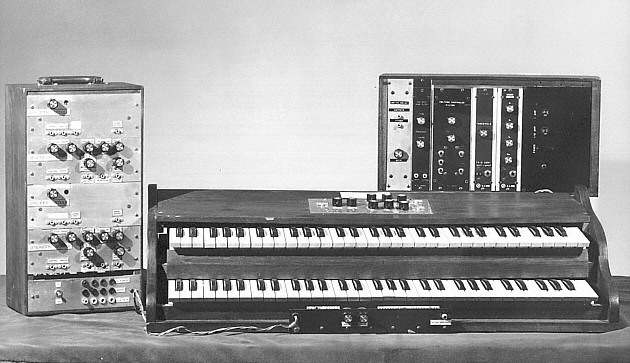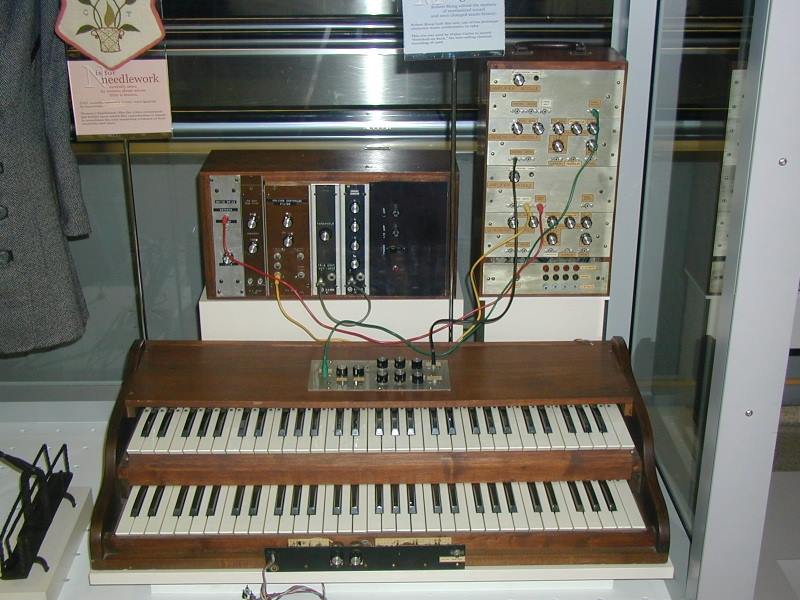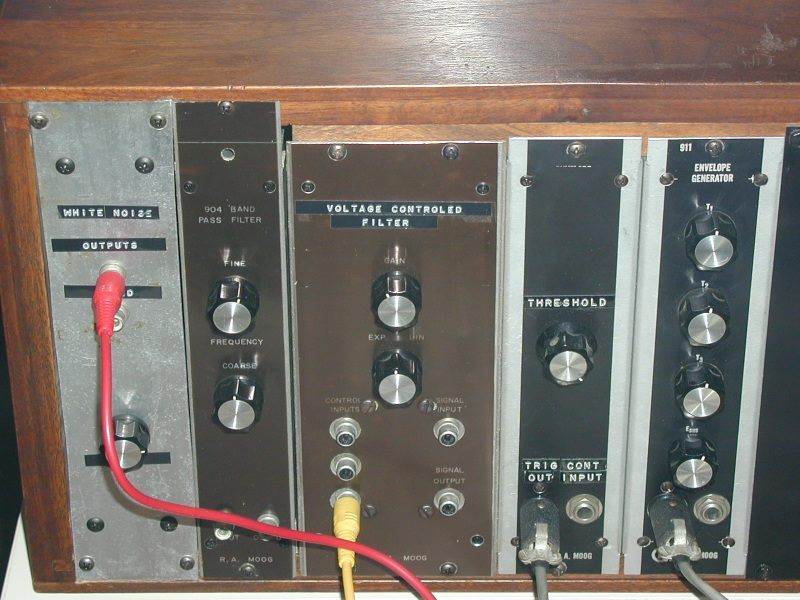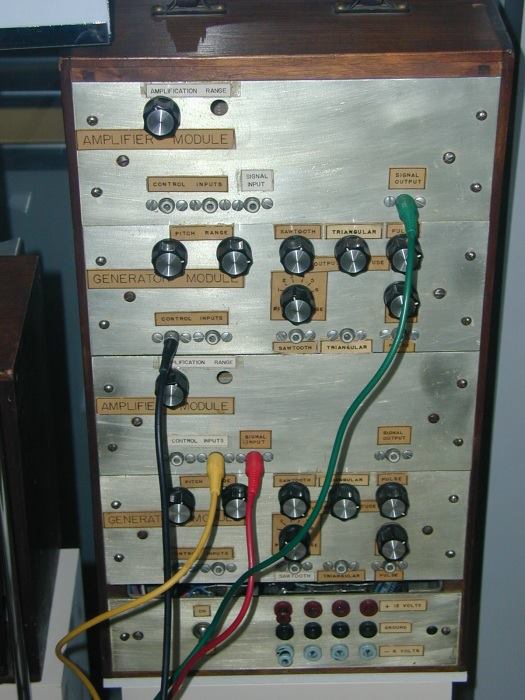Description | This Moog synthesizer is one of two prototypes built by Robert Moog from July-September 1964, with additional modules added in 1964 and 1965. One was taken to Toronto University in 1965, while this one was kept by the inventor and his colleague, Herbert Deutsch. It was used in live public performance for the first time in a concert at Town Hall in New York City on September 25, 1965. |
| Brand | Moog |
| Model | Prototype The First Moog Synthesizer |
| Device | Synth |
| Type | Keys |
| Engine Type | Analog |
| Engine | VCO |
| Voices (max) | 1 |
| Oscillators | 1 |
| LFO | 1 Square, Triangle |
| Engine Detailed | 1 VCO, Saw Down, Saw Up, Square, Triangle |
| Filter (VCF) | 1 24dB Slope (4-pole), Low Pass, Resonance |
| Envelope (VCA) | 1 ADS |
| Keys | 49x2 |
| Key type | Keys |
| Velocity | N |
| Aftertouch | N |
| CV-gate | CV I-O |
|
Produced: | 1964 - 1964 |
| Legend: |
Obvious |
Y: Yes, N: No, N/A: Not Applicable |
| VCO |
Voltage Controlled Oscillator |
DCO |
Digital Controlled Oscillator |
| LFO |
Low Frequency Oscillator |
Sub |
Sub Oscillator |
| VCF |
Voltage Controlled Filter |
VCA |
Voltage Controlled Amplifier |
| Velocity |
As with a piano, the harder you hit a key, the louder the sound, unlike most organs which always produce the same loudness no matter how hard you hit a key. |
Aftertouch |
Pressing a key after you activated it. Channel Aftertouch, no matter which key, it will send a Channel message. Poly Aftertouch, sends the pressure per key instead of the whole channel. |
| Values for OSC, LFO, Filter, Envelope are per voice unless stated otherwise. |






